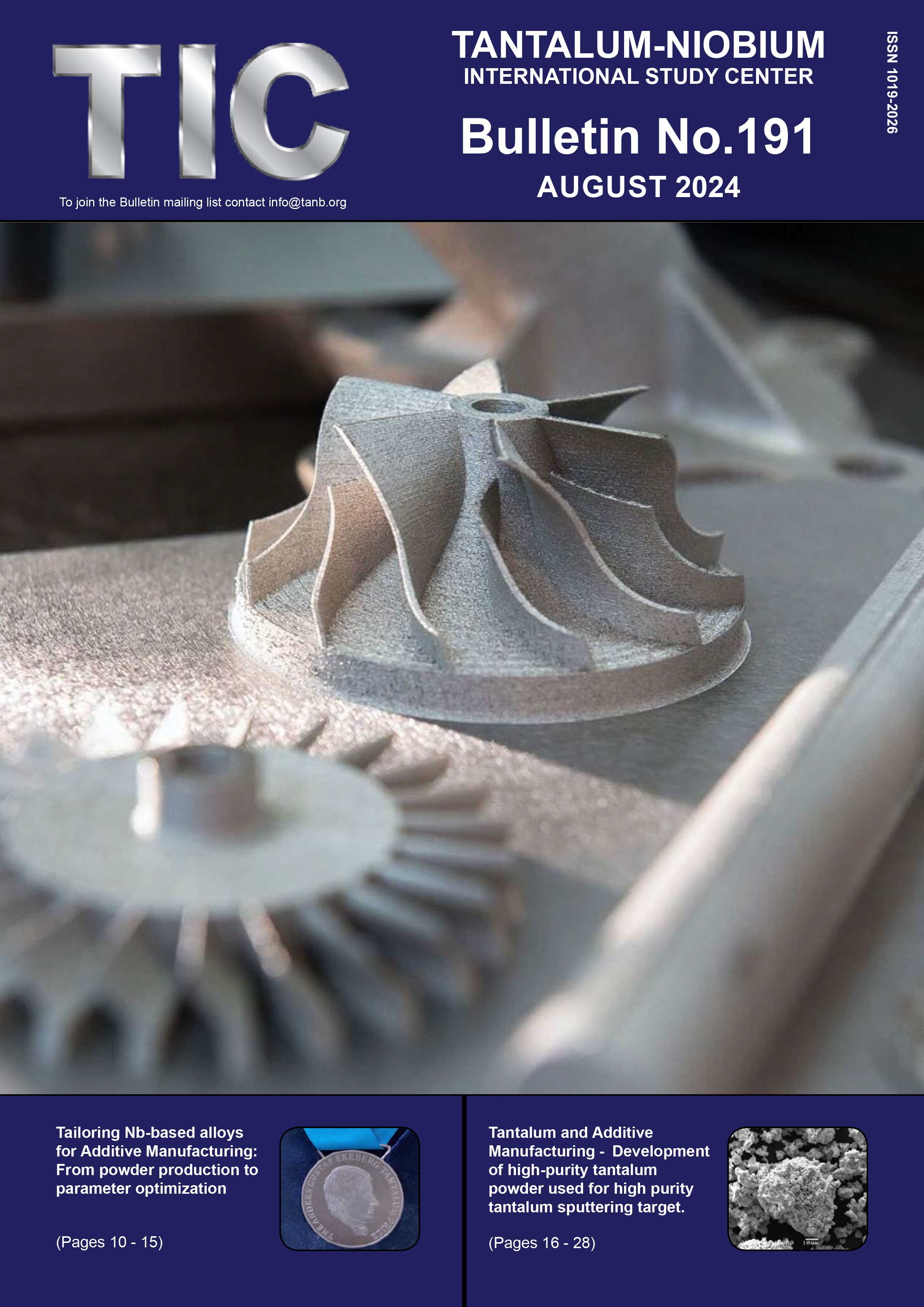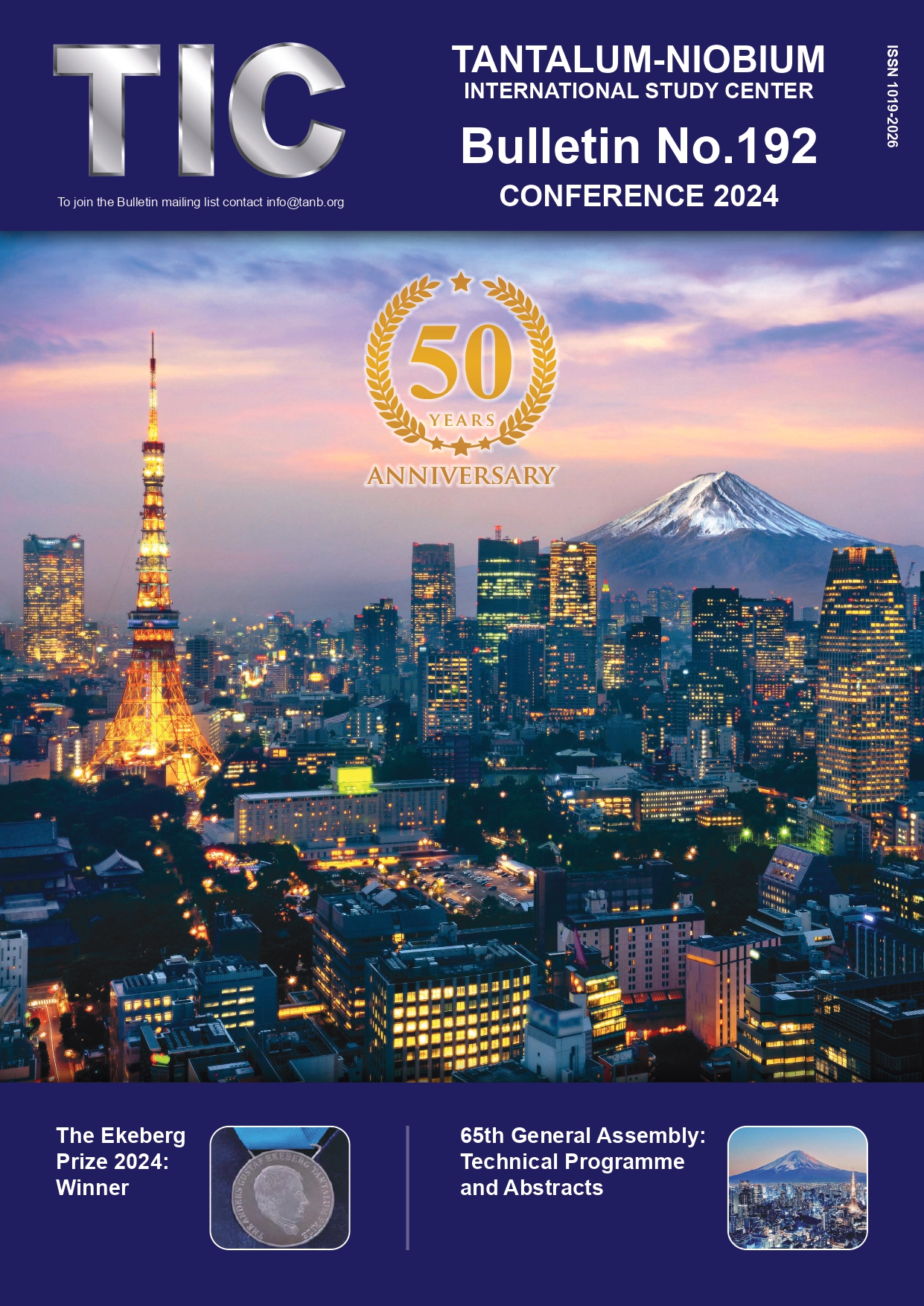About tantalum
Early history
Tantalum was discovered in 1802, one year after niobium. In 1801, Charles Hatchett (1765-1847), an English chemist, analysed a specimen of an unknown mineral from the collection of the British Museum in London. This was a heavy black mineral obtained from the collection of the first governor of Connecticut, John Winthrop, who was an alchemist, manufacturing chemist, physician, and rock collector. The mineral, later called columbite, was found near New London, Connecticut. Charles Hatchett determined that this mineral contained a 'new earth', which implied a new element had been found. He named this element columbium apparently in reference to its source being America.
Read MoreTypical market specifications
Tantalite on the international market generally contains a minimum of 30% Ta2O5, while lower grade material with a minimum of 20% Ta2O5 may also be of interest. The commercial payable value is based on the Ta2O5 content alone, any Nb2O5 is generally ignored. Should material contain mainly Nb2O5 and only little Ta2O5, then it would be sold as columbite and should contain a minimum of 50% Nb2O5. The payable value is based on the Nb2O5+Ta2O5 content payable entirely as Nb2O5; the Ta2O5 content is not paid a higher rate.
Read MoreValuation basis
The T.I.C. as an international association is not allowed to gather data on nor discuss prices, forecasting or future trends, as this would be against our Charter and may raise antitrust and competition law concerns.
Read MoreProduction of raw materials
Extraction or production of tantalum raw materials of all kinds is widespread, whether by primary industrial mining, artisanal mining, as a secondary mineral or as a by-product. Brazil is currently the major producer. Significant quantities are also produced in China, the DR Congo, Russia and Rwanda. Additional quantities are produced, some intermittently or at a low level, in Australia, Burundi, France, Malaysia, Mozambique, Namibia, Nigeria, Thailand and Zimbabwe.
Read MoreProcessing: extraction and refining
The extraction and refining of tantalum, including the separation from niobium in these various tantalum-containing mineral concentrates, is generally accomplished by treating the ores with a mixture of hydrofluoric and sulfuric acids at elevated temperatures. This causes the tantalum and niobium values to dissolve as complex fluorides, and numerous impurities that were present also dissolve. Other elements such as silicon, iron, manganese, titanium, zirconium, uranium, thorium, rare earths, et c. are generally present. The filtration of the digestion slurry, and further processing via solvent extraction using methyl isobutyl ketone (MIBK) or liquid ion exchange using an amine extractant in kerosene, produces highly purified solutions of tantalum and niobium. Generally, the tantalum values in solution are converted into potassium tantalum fluoride (K2TaF7) or tantalum oxide (Ta2O5). The niobium is recovered as niobium oxide (Nb2O5) via neutralization of the niobium fluoride complex with ammonia to form the hydroxide, followed by calcination to the oxide.
Read MoreApplications for tantalum
Tantalum consumption is dominated by capacitors for electronic equipment.
Additionally, tantalum wire is consumed by the capacitor manufacturers as the anode lead. Tantalum metal is also used for sintering tray assemblies and shielding components for the anode sintering furnaces.
Read MoreHarmonised system commodity codes
HS codes were developed by the World Customs Organization (WCO), as six-digit figures for describing internationally traded goods. Individual countries may further extend this code with an additional two or four digits, however these additional digits are not harmonised and may have different meanings from country to country. Below is a list of six-digit HS codes known to apply, or to have applied at some time, to niobium and tantalum materials, as well as a selection of variants used in some Customs jurisdictions.
Read MoreFurther information
T.I.C.'s library of external links and third-party reports related to tantalum.
Read More




